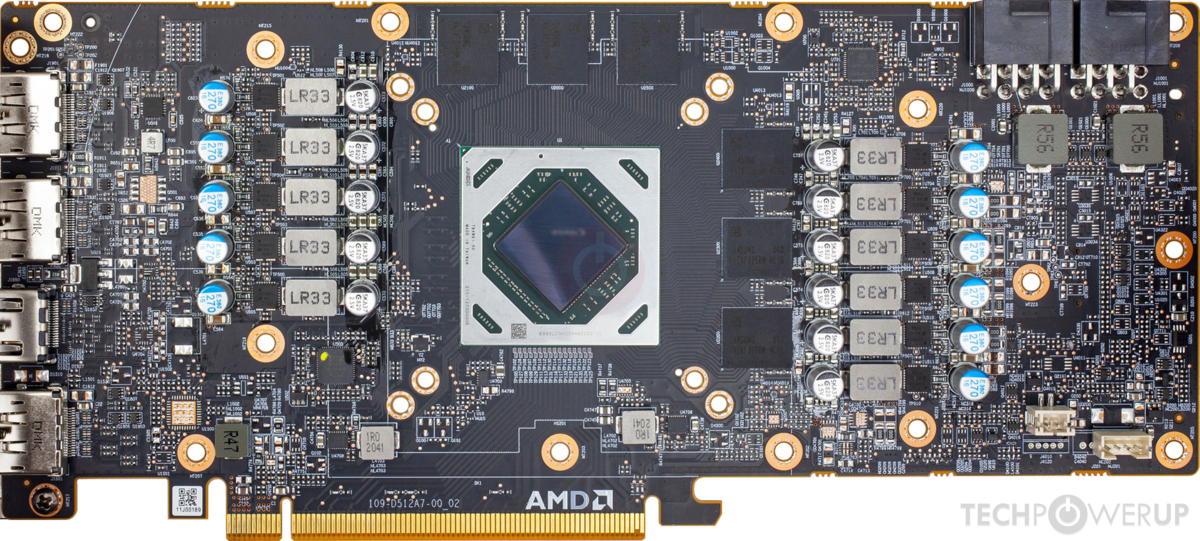T0@st
News Editor
- Joined
- Mar 7, 2023
- Messages
- 2,952 (3.80/day)
- Location
- South East, UK
| System Name | The TPU Typewriter |
|---|---|
| Processor | AMD Ryzen 5 5600 (non-X) |
| Motherboard | GIGABYTE B550M DS3H Micro ATX |
| Cooling | DeepCool AS500 |
| Memory | Kingston Fury Renegade RGB 32 GB (2 x 16 GB) DDR4-3600 CL16 |
| Video Card(s) | PowerColor Radeon RX 7800 XT 16 GB Hellhound OC |
| Storage | Samsung 980 Pro 1 TB M.2-2280 PCIe 4.0 X4 NVME SSD |
| Display(s) | Lenovo Legion Y27q-20 27" QHD IPS monitor |
| Case | GameMax Spark M-ATX (re-badged Jonsbo D30) |
| Audio Device(s) | FiiO K7 Desktop DAC/Amp + Philips Fidelio X3 headphones, or ARTTI T10 Planar IEMs |
| Power Supply | ADATA XPG CORE Reactor 650 W 80+ Gold ATX |
| Mouse | Roccat Kone Pro Air |
| Keyboard | Cooler Master MasterKeys Pro L |
| Software | Windows 10 64-bit Home Edition |
AMD's Radeon RX 9070 XT and RX 9070 "MBA" graphics cards are no longer "best kept secrets"—as demonstrated recently by the "leaking out" of supposed reference models through black market/back alley channels in China. Late last month, a dual-fan non-XT specimen was snapped up by Chiphell forum member—alleged benchmark results were soon shared within that community. A few days later, a "Made-by-AMD" Radeon RX 9070 XT sample was dissected and compared to Sapphire's PULSE Radeon RX 9070 XT 16 GB SKU. An additional MBA XT example emerged last week, courtesy of another in-depth Chiphell thread. A "bored" enthusiast happened upon a 5499 RMB (~$748 USD) when idly browsing through Xianyu listings (Taobao's Ebay equivalent platform). Their buying experience was described as follows: "(I) found a 'public version' Radeon RX 9070 XT in Tianjin. It was said to be manufactured by (an) OEM, so I bought it without hesitation...I made an appointment to meet today and got it successfully. I don't have to wait for a graphics card anymore."
For unknown reasons, AMD decided to launch its first wave of RDNA 4 gaming graphics cards sans first-party designs. Leaked specimens have attracted much attention in China; with owners bragging about their respective ownerships of reasonably priced rarities. The latest back channel customer expressed satisfaction when inspecting Team Red's all-black flagship Navi 48 GPU-based solution: "after I got it, I have to say that it is not very heavy and is quite light. But the appearance is really what I like." After initial tests, they discovered that VRAM temperatures were not up to snuff—as alluded to (pre-launch) by other Chiphell figures. Their personal DIY improvements were described: "(I) took it apart to measure the thickness of the thermal grease pad. Everyone said the temperature of the video memory was high, so I decided to change to something better....(with) original silicone grease FurMark 2K resolution for 20 minutes: maximum core temperature was 62 degrees, maximum hot spot temperature was 84 degrees, maximum memory temperature was 88 degrees, maximum power was consumption 346 W."




They determined that the graphene-like conductive layer was fit for GPU die cooling purpose, but replaced the factory-applied thermal grease on VRAM sections. This modification resulted in recorded memory temperatures reduced down to 82 °C. In conclusion, they surmised: "the temperature of the (expensive) silicone grease I bought dropped significantly, proving that it is effective, but whether it is worth the price is debatable. Note: I didn't open the 1.75 mm one and returned it, but I still have a lot of 2 mm ones that I haven't used up. So the actual cost is less than 300 yuan (~$41 USD), don't criticize me."
View at TechPowerUp Main Site | Source
For unknown reasons, AMD decided to launch its first wave of RDNA 4 gaming graphics cards sans first-party designs. Leaked specimens have attracted much attention in China; with owners bragging about their respective ownerships of reasonably priced rarities. The latest back channel customer expressed satisfaction when inspecting Team Red's all-black flagship Navi 48 GPU-based solution: "after I got it, I have to say that it is not very heavy and is quite light. But the appearance is really what I like." After initial tests, they discovered that VRAM temperatures were not up to snuff—as alluded to (pre-launch) by other Chiphell figures. Their personal DIY improvements were described: "(I) took it apart to measure the thickness of the thermal grease pad. Everyone said the temperature of the video memory was high, so I decided to change to something better....(with) original silicone grease FurMark 2K resolution for 20 minutes: maximum core temperature was 62 degrees, maximum hot spot temperature was 84 degrees, maximum memory temperature was 88 degrees, maximum power was consumption 346 W."




They determined that the graphene-like conductive layer was fit for GPU die cooling purpose, but replaced the factory-applied thermal grease on VRAM sections. This modification resulted in recorded memory temperatures reduced down to 82 °C. In conclusion, they surmised: "the temperature of the (expensive) silicone grease I bought dropped significantly, proving that it is effective, but whether it is worth the price is debatable. Note: I didn't open the 1.75 mm one and returned it, but I still have a lot of 2 mm ones that I haven't used up. So the actual cost is less than 300 yuan (~$41 USD), don't criticize me."
View at TechPowerUp Main Site | Source







